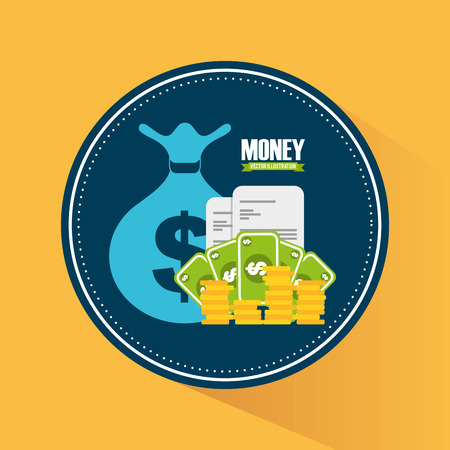1. Understanding the Rental Market
Before diving into property management, its essential to understand the rental market. A well-researched market analysis helps you set competitive rent prices, attract reliable tenants, and maximize your investment returns.
Key Factors in Analyzing the Rental Market
Understanding your local rental market involves evaluating several key factors:
- Supply and demand for rental properties
- Average rental prices in your area
- Vacancy rates and tenant turnover trends
- Economic conditions and job opportunities
- Demographics and renter preferences
How to Analyze Local Rental Trends
Analyzing local rental trends requires gathering data from multiple sources. Here are some effective ways to research:
(1) Use Online Rental Platforms
Websites like Zillow, Rent.com, and Apartments.com provide insights into current rent prices and market trends.
(2) Check Government Reports
The U.S. Census Bureau and local housing authorities publish reports on vacancy rates, population growth, and economic conditions.
(3) Talk to Local Property Managers
Experienced property managers can offer first-hand insights into rental demand, common tenant preferences, and pricing strategies.
(4) Monitor Economic Indicators
Keep an eye on job growth, median income levels, and business developments in your area, as these factors influence rental demand.
Setting Competitive Rent Prices
Pricing your rental correctly is crucial for attracting tenants while ensuring profitability. Consider these factors when determining rent:
| Factor | Description |
|---|---|
| Comparable Properties (Comps) | Analyze similar properties in the neighborhood to determine a competitive price. |
| Amenities & Upgrades | If your property has extra features (e.g., updated appliances, parking), you can justify a higher rent. |
| Location Demand | A property near schools, shopping centers, or public transport can command higher rents. |
| Market Conditions | If there’s high demand with low supply, you may be able to charge more; if vacancies are high, consider adjusting rent accordingly. |
Identifying Profitable Markets for Investment
If youre looking to invest in a new rental property, choosing the right location is critical. Here’s how to identify profitable markets:
(1) Look for Population Growth
Cities with increasing populations often have strong rental demand.
(2) Research Job Opportunities
A thriving job market attracts renters who need housing close to work.
(3) Evaluate Rental Yields
The rental yield (annual rental income divided by purchase price) helps measure potential profitability.
(4) Consider Future Development Plans
Cities with planned infrastructure improvements or new businesses opening up tend to see rising property values and rental demand.
A thorough understanding of the rental market allows you to make informed decisions that maximize your propertys value and ensure long-term success as a landlord.
2. Tenant Screening and Leasing Strategies
Finding the right tenants is one of the most critical aspects of managing rental properties. A well-screened tenant can lead to fewer issues, timely rent payments, and a positive landlord-tenant relationship. Below are essential strategies for tenant screening and lease agreements.
Tenant Screening Best Practices
A thorough tenant screening process helps ensure that you select responsible renters who will respect your property and pay rent on time. Follow these steps for effective screening:
(1) Establish Clear Rental Criteria
Before accepting applications, define your rental criteria. This should include income requirements, credit score minimums, rental history, and any other key factors.
(2) Require a Rental Application
Have every applicant complete a detailed rental application that includes their employment information, income verification, previous rental history, and references.
(3) Conduct Background and Credit Checks
Screen applicants by running background and credit checks. Look for red flags like prior evictions, significant debt issues, or criminal records.
(4) Verify Employment and Income
Confirm the applicants employment status and ensure their monthly income is at least 2.5 to 3 times the rent amount.
(5) Contact Previous Landlords
Reach out to past landlords to check if the applicant paid rent on time and maintained the property well.
Creating a Strong Lease Agreement
A solid lease agreement protects both landlords and tenants by outlining expectations and responsibilities. Key components of a strong lease include:
| Lease Component | Description |
|---|---|
| Rent Payment Terms | Specify the rent amount, due date, late fees, and acceptable payment methods. |
| Security Deposit Details | Outline the deposit amount, conditions for deductions, and refund timeline. |
| Maintenance Responsibilities | Clarify which maintenance tasks are the tenant’s responsibility versus the landlord’s. |
| Occupancy Limits | Define who is allowed to live in the unit to prevent unauthorized occupants. |
| Pets Policy | If pets are allowed, specify breed restrictions, pet deposits, or additional rent charges. |
| Lease Termination Rules | Cite notice periods for moving out or breaking the lease early. |
Maintaining Positive Landlord-Tenant Relationships
A good relationship with your tenants leads to longer leases and fewer disputes. Here’s how you can foster a positive dynamic:
(1) Be Responsive to Maintenance Requests
Address repair issues quickly to show tenants that you care about their comfort and safety.
(2) Communicate Clearly and Professionally
Avoid misunderstandings by keeping communication polite, professional, and documented in writing when necessary.
(3) Respect Tenant Privacy
If you need to enter the rental unit for inspections or repairs, provide proper notice as required by law.
(4) Offer Incentives for Good Tenants
A small token of appreciation—such as a minor upgrade or discount on renewal—can encourage long-term tenancy.
(1) Implementing These Strategies Effectively
The key to success in managing rental properties is consistency. Apply these screening techniques uniformly to all applicants to comply with fair housing laws while ensuring reliable tenants occupy your property.

3. Property Maintenance and Repairs
Keeping your rental property in top condition is essential for tenant satisfaction and long-term profitability. Proper maintenance and timely repairs can prevent costly issues and ensure compliance with local housing regulations. Here’s how you can effectively manage routine maintenance, emergency repairs, and cost-effective property upgrades.
Routine Maintenance Strategies
Regular maintenance helps avoid major repairs down the line. Implementing a proactive plan ensures your property remains in excellent condition while minimizing unexpected costs.
(1) Create a Maintenance Schedule
Having a structured schedule for inspections and upkeep can help you stay ahead of potential problems. Consider the following checklist:
| Task | Frequency |
|---|---|
| HVAC filter replacement | Every 3 months |
| Smoke detector check | Every 6 months |
| Plumbing inspection | Annually |
| Roof and gutter cleaning | Annually |
| Pest control inspection | Bi-annually |
(2) Work with Reliable Contractors
Building relationships with trusted service providers can save time and money. Look for licensed professionals who offer fair pricing and reliable service.
(3) Encourage Tenant Reporting
Tenants should feel comfortable reporting maintenance concerns early. Provide multiple ways for them to submit requests, such as an online portal, email, or phone call.
Handling Emergency Repairs
No matter how well you maintain your property, emergencies will arise. Being prepared can help minimize damage and keep tenants safe.
(1) Identify Common Emergencies
The most common urgent repairs include:
- Burst pipes or major leaks
- No heat during winter months
- Sewage backups
- Pest infestations posing health risks
- Gas leaks or electrical failures
(2) Establish a 24/7 Response Plan
Create a clear protocol for handling emergencies, including a list of emergency contacts and preferred contractors.
(3) Communicate with Tenants Immediately
If an emergency occurs, inform tenants about the next steps and expected resolution time.
Cost-Effective Property Upgrades
Upgrading your property doesn’t have to be expensive. Small improvements can enhance its value and attract quality tenants.
(1) Focus on High-Impact Areas
The kitchen and bathroom are key areas where minor upgrades can make a significant difference. Consider replacing outdated fixtures or adding modern lighting.
(2) Use Durable, Low-Maintenance Materials
Select flooring, countertops, and appliances that are both attractive and easy to maintain. This reduces future repair costs.
(3) Improve Energy Efficiency
Installing energy-efficient appliances, LED lighting, and smart thermostats can lower utility bills and appeal to eco-conscious renters.
(1) Budget-Friendly Upgrade Ideas
| Upgrade Type | Estimated Cost Range ($) |
|---|---|
| New kitchen backsplash | $100 – $500 |
| Modern light fixtures | $50 – $300 per room |
| Energy-efficient appliances | $500 – $2,000+ |
| Curb appeal enhancements (landscaping/paint) | $200 – $1,000+ |
| Smart home technology (thermostat/security system) | $100 – $500+ |
A well-maintained rental property leads to satisfied tenants and long-term financial success. By staying proactive with maintenance, responding quickly to emergencies, and making strategic upgrades, you can maximize your investment while keeping costs under control.
4. Financial Management and Tax Considerations
Effectively managing your rental propertys finances is crucial for long-term success. Proper budgeting, maximizing rental income, and understanding tax benefits can significantly impact your profitability. Below, we’ll break down key financial strategies to help you manage your investment wisely.
Budgeting for Rental Property Expenses
To ensure profitability, it’s essential to plan for both expected and unexpected costs associated with your rental property. A well-structured budget can help you avoid financial strain and maintain steady cash flow.
(1) Common Rental Property Expenses
Here are some common expenses landlords should account for:
| Expense Category | Description |
|---|---|
| Mortgage Payments | Monthly loan payments if the property is financed. |
| Property Taxes | Annual taxes based on the property’s assessed value. |
| Insurance | Landlord insurance to cover property damage and liability. |
| Maintenance & Repairs | Routine upkeep and unexpected repairs. |
| Property Management Fees | If you hire a property manager, expect to pay 8-12% of monthly rent. |
| Utilities | If not covered by tenants, costs for water, electricity, gas, etc. |
| Vacancy Costs | Potential lost income during tenant turnover periods. |
(2) Creating an Emergency Fund
A reserve fund can help cover unexpected expenses like major repairs or sudden vacancies. Experts recommend setting aside at least 3-6 months’ worth of operating expenses.
Maximizing Rental Income
Increasing your rental income doesn’t always mean raising rent prices. Here are some strategies to maximize revenue while keeping tenants happy:
(1) Competitive Rent Pricing
Research local market rates to ensure youre charging fair yet profitable rent. Online platforms like Zillow or Rentometer can provide valuable insights.
(2) Offering Additional Services
You can generate extra income by providing services like paid parking, laundry facilities, or pet fees.
(3) Reducing Vacancy Rates
Avoid long vacancy periods by maintaining good relationships with tenants, responding quickly to maintenance requests, and marketing your property effectively when it becomes available.
Tax Benefits for Rental Property Owners
The IRS offers various tax deductions that can help reduce taxable income from rental properties. Understanding these deductions can save you money come tax season.
(1) Deductible Expenses
The following are common deductions available to landlords:
- Mortgage interest
- Property taxes
- Depreciation of the property structure
- Repairs and maintenance costs
- Insurance premiums
- Legal and professional service fees (e.g., accountants, attorneys)
- Mileage and travel expenses related to property management
(2) Depreciation Benefits
The IRS allows landlords to depreciate their rental properties over 27.5 years, reducing taxable income each year.
(3) 1031 Exchange for Deferring Capital Gains Taxes
If you plan to sell a rental property, a 1031 exchange allows you to reinvest the proceeds into another investment property while deferring capital gains taxes.
A solid financial strategy ensures that your rental property remains a profitable investment. By budgeting wisely, maximizing income opportunities, and leveraging tax advantages, you can build long-term financial success in real estate investing.
5. Legal Compliance and Risk Mitigation
Managing rental properties involves more than just finding tenants and collecting rent. Staying compliant with landlord-tenant laws and fair housing regulations is crucial to avoid legal disputes and minimize liability. Understanding your legal responsibilities can help protect your investment and ensure a smooth rental operation.
Understanding Landlord-Tenant Laws
Each state has specific landlord-tenant laws that govern issues like security deposits, lease agreements, eviction procedures, and maintenance responsibilities. Here are some key areas to focus on:
| Legal Aspect | Description |
|---|---|
| Security Deposits | Laws dictate how much you can charge, how deposits should be held, and when they must be returned. |
| Lease Agreements | A legally binding document outlining tenant and landlord responsibilities. |
| Eviction Rules | You must follow the legal process when evicting a tenant, including proper notice periods. |
| Maintenance Obligations | You are required to keep the property in habitable condition and address necessary repairs promptly. |
Navigating Fair Housing Regulations
The Fair Housing Act prohibits discrimination based on race, color, national origin, religion, sex, disability, or familial status. To remain compliant:
(1) Avoid Discriminatory Language in Listings
Your rental advertisements should not include language that favors or excludes any group.
(2) Apply Screening Criteria Consistently
Treat all applicants equally by using the same rental criteria for everyone.
(3) Make Reasonable Accommodations for Disabilities
If a tenant requests reasonable modifications due to a disability, you may be required to comply under federal law.
Strategies to Minimize Liability
(1) Maintain Proper Insurance Coverage
Adequate landlord insurance protects against property damage, liability claims, and lost rental income.
(2) Conduct Regular Property Inspections
This helps identify potential hazards before they become serious issues that could lead to lawsuits.
(3) Keep Detailed Documentation
Maintain records of lease agreements, communication with tenants, repair requests, and inspections to protect yourself in case of disputes.


